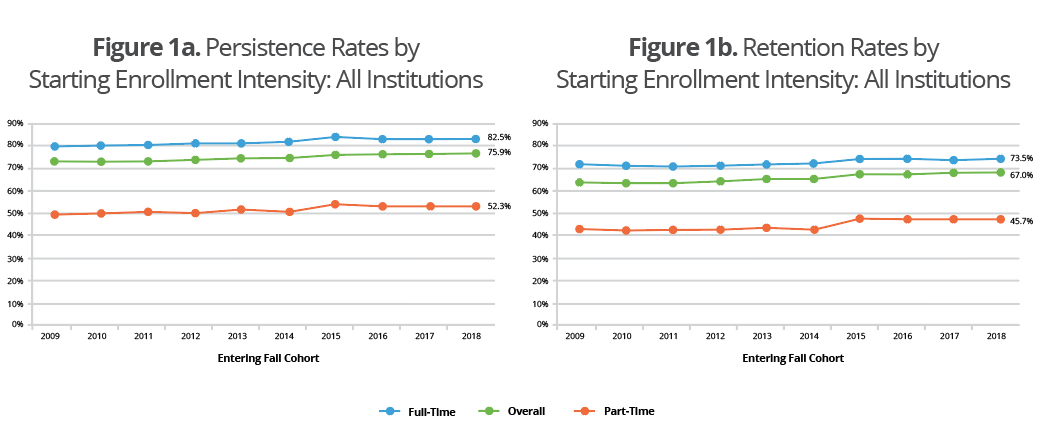- BLOG HOME
- »
- Research Services
- »
- Research Center Releases 2020 Persistence and Retention Report

Research Center Releases 2020 Persistence and Retention Report
According to the Research Center’s 2020 Persistence and Retention Report, among the 2.6 million people who enrolled in college as a first-time undergraduate student in fall 2018, 76 percent (approximately 2 million people) persisted at any U.S. institution by fall 2019, while 67 percent (more than 1.7 million people) were retained at their starting institution. These national rates combine full-time and part-time students starting at all institution types, including two- and four-year, public and private, for-profit and non-profit.
The overall first-year persistence rates barely changed in recent years, from 2015 to 2018. An average of 9.2 percent of freshmen, in any fall term between 2009 and 2018, transferred to a different institution by the following fall. The average transfer-out rate was higher for students who first entered as full-time (9.6%) than for those who began as part-time (7.4%).
The report provides additional data to examine based on state, institution type, majors, degree levels, race and ethnicity, and age. For example, to help understand persistence among students who delayed college entry, the report provides state-level data by student age at entry.
Top 5 States for Persistence Rate for Students Who First Entered Postsecondary Education Over Age 24 in Fall 2018:
| Georgia | 60.1% |
| Tennessee | 59.9% |
| Dakota | 59.4% |
| Idaho | 59.0% |
| New York | 57.1% |
The Persistence and Retention report series examines first-year persistence and retention rates for beginning postsecondary students. Persistence rate is measured by the percentage of students who return to college at any institution for their second year, while retention rate is by the percentage of students who return to the same institution.
76% of first-time freshmen in fall 2018 returned to college for their second year. This rate represents the third straight year of little improvement in this important early success indicator.
Additional Resources:




